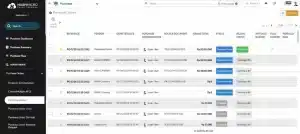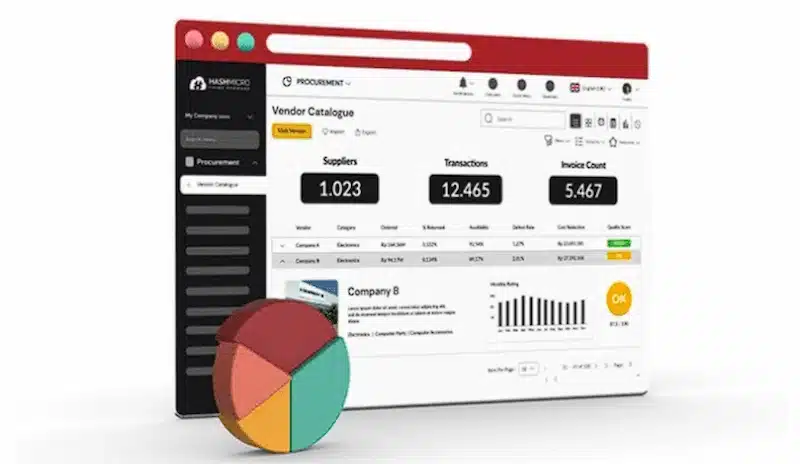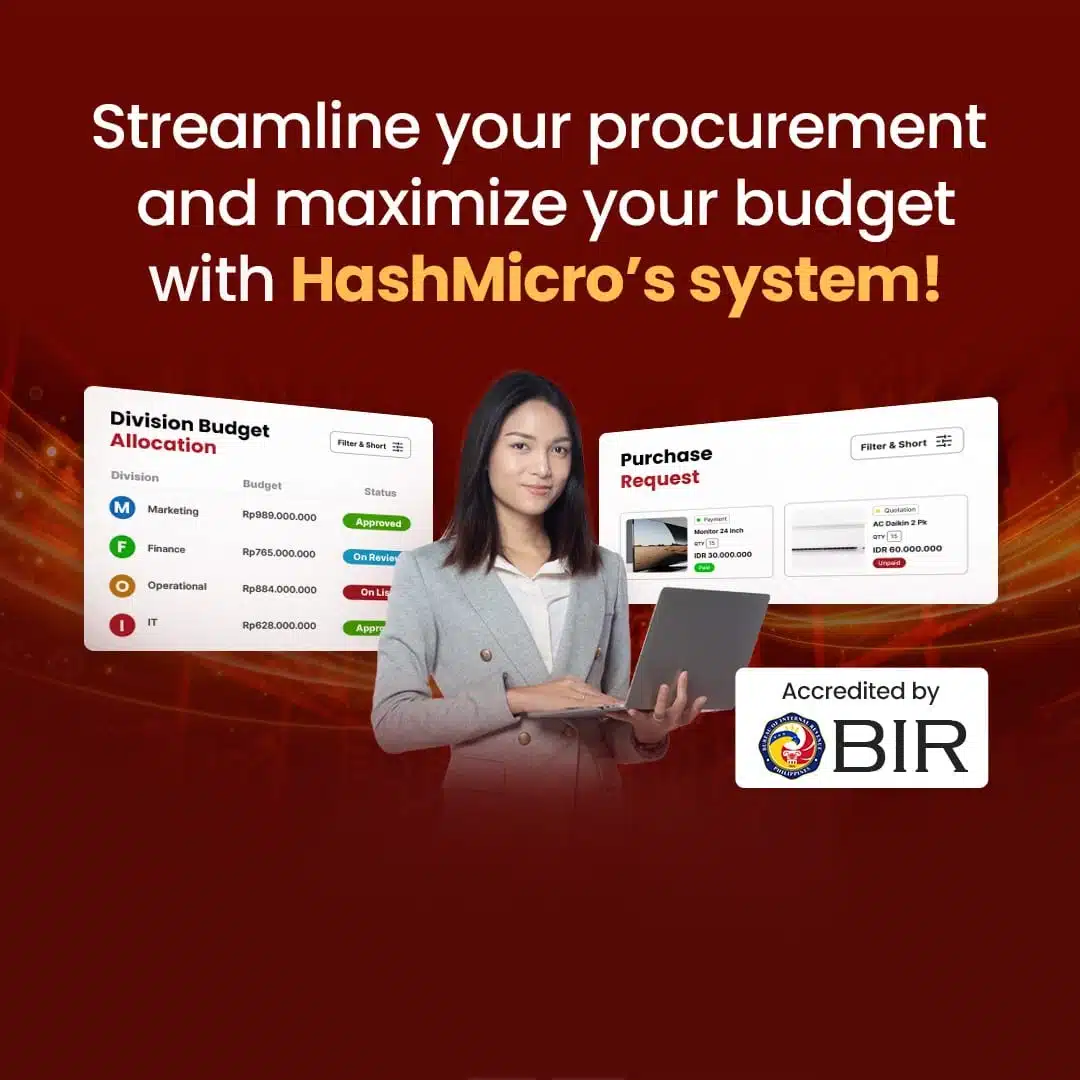Purchase order vs invoice, which one is better? These two documents occupy an important position in managing the transaction process carried out by the company together with the vendor.
However, although purchase orders and invoices both have important roles, they are two things that have their own differences and roles. Kaya, ano ang mga pangunahing pagkakaiba sa pagitan ng dalawa? Basahin ang artikulong ito hanggang sa huli dahil tatalakayin natin ito ng masinsinan!
Kaya, pumasok na tayo ngayon!
Table of Content
Content Lists

Key Takeaways
|
What is a Purchase Order?
Let’s start the discussion about purchase order vs invoice by first talking about purchase orders. A purchase order (PO) is a document issued by a buyer to a seller, confirming the intention to purchase goods or services. The PO includes details such as quantity, price, and delivery terms, and serves as a purchase authorization. With a purchase order, the buyer and seller have a clear agreement on the transaction to be carried out.
A purchase order (PO) is issued before the goods or services are delivered by the seller. The PO issuance process usually occurs after the buyer conducts a needs analysis and determines the specifications of the goods or services to be purchased.
Once a purchase order is issued, the seller will usually issue an order receipt. The order receipt is issued after the buyer submits the purchase order and the seller receives and verifies the order. This document serves as proof that the seller has received the order from the buyer and as a record for both parties.
One of the main functions of a purchase order is to authorize the seller to deliver the requested goods or services. Purchase order help maintain accuracy and transparency in the procurement process, as well as being an effective tool for inventory management.
With this document, buyers can monitor and manage expenditures, while sellers can ensure that they fulfill requests in accordance with the agreement. Purchase orders also help the accounting system work. This can happen because the information in the purchase order will be matched with the invoice issued by the seller to ensure that the payment made matches the goods or services received.
What is an Invoice?
An invoice is an official document issued by a seller to a buyer as a request for payment for goods or services that have been provided. Invoice orders include important information such as a description of the goods or services, quantity purchased, etc. Invoice orders serve as proof of transactions and as accounting records for both parties.
Unlike purchase orders that are issued before the order is given, invoice orders are issued after the goods or services have been delivered or completed. The order invoice is then sent to the buyer as a means of verifying whether the order is as requested.
Invoices are important for companies, as they provide clear details of the amount to be paid, including the due date. Furthermore, invoices also help companies to analyze purchasing and spending patterns to plan more effective budgets and business strategies.
What is Included in PO & Invoice

Until now, you must have wondered what components are recorded in purchase orders and invoices. You might want to take a look at the image above, of a purchase system to understand that.
In the image above, you can see several important components of identity recorded, such as the vendor name, estimated date of arrival, document source, responsible person or purchase representative, price of the purchased item, payment status, and delivery status.
The identity of the order should be recorded on the purchase order and invoice template to ensure that the transaction can be clearly tracked and verified by both parties. Recording this identity is also important in auditing and accounting, ensuring that every transaction is recorded and managed properly.
Key Difference Between Purchase Order and Invoice
Dito ipinapakita namin ang mga pangunahing pagkakaiba sa pagitan ng mga purchase order, purchase order system, at invoice order:
| Aspects | Purchase Order | Invoice |
| Definition | A document issued by a buyer to order goods or services. | A document issued by the seller to collect payment. |
| Objective | Declare intent to purchase and provide authorization for delivery. | Collect payment for goods or services that have been provided. |
| Publishing Time | Issued before the goods or services are delivered. | Issued after the goods or services have been delivered. |
| Issuing Party | Issued by the buyer. | Issued by the seller. |
| Details Listed | Contains details such as quantity, price, and delivery terms. | It contains details such as the amount to be paid, the due date, and a description of the goods or services. |
Similarities Between Purchase Orders and Invoices
Indeed, a purchase order and invoice are two different important documents. Even so, these two documents still have similarities, one of which is their use as a means of communication between buyers and sellers.
Both purchase orders and invoices include important information such as the buyer and seller’s name and address, a description of the goods or services involved, and a breakdown of the price. As such, they help ensure that all parties involved clearly understand the transaction at hand.
In addition, both purchase orders and invoices play a role in the company’s financial management process. Purchase orders help buyers manage expenses and maintain control over purchases made. Meanwhile, invoices are used by sellers to collect payments formally.
Both create the necessary records for accounting, making it easy to reconcile between purchase and payment records. This is important to ensure that all transactions are accurately recorded in the financial statements.
With these two documents in place, companies can ensure transparency and accountability in transactions, which in turn helps build trust between buyers and sellers. Both are critical components in maintaining the integrity and smoothness of business operations.
Why Do Companies Need These Two Documents?
We have discussed the definitions, differences, and similarities of purchase order vs invoice. But why are these two documents important and should companies use them?
Companies need purchase orders and invoice orders to ensure an efficient and organized procurement and payment process. Purchase orders serve as a tool to confirm the purchase to be made, providing clear details of the goods or services required, including quantity and price.
With the best purchase order software in place, companies can maintain control over expenditures and ensure that all purchases are made within the set budget. It also helps in preventing errors and misuse, as all orders must be approved before processing.
On the other hand, invoice orders play a crucial role in the billing and accounting process. Once the goods or services are delivered, the invoice order provides valid proof of the transaction and lists the amount to be paid and the payment terms.
Using these two documents, companies can take one step further in ensuring transparency in transactions, strengthening relationships with suppliers, and improving accuracy in financial reports. Thus, using well-rounded tools like billing software (or purchase order software) may contribute significantly to a company’s tidy financial accounts.
Improve Purchase Order and Invoice Management Accuracy Using HashMicro Procurement System

Given the important role of purchase orders and invoices, the preparation of these two documents must be managed properly. Unfortunately, managing these documents is not easy, especially if managed manually.
Manually compiling purchase orders and invoices is prone to errors, one of which is duplicate or missing document numbers. This will affect the difficulty of management in tracking goods ordered or received. Therefore, whether you are a seller or a buyer, it is important to manage these documents using a procurement system like HashMicro.
HashMicro’s procurement system is specifically designed to meet various procurement needs, one of which is the management of PO and invoice documents. In addition, the system also provides a free demo to give enthusiasts the opportunity to learn the HashMicro system first.
In addition to its robust features, HashMicro’s procurement software provides extensive customization options to fit unique business requirements. HashMicro also has a smart solution with Hashy, an AI system that supports AR Collectors by automating bill management and sending timely reminders for unpaid invoices.
Moreover, this system can also be integrated with other applications, one of which is an accounting application. With this capability, the HashMicro application not only facilitates document management, but also financial management in your company.
Here are the features of HashMicro procurement software that can help you manage purchase orders and invoices:
- Custom Printout in RFQ: Customize RFQ formats for various types of procurements that can make it easier to prepare RFQs according to procurement needs.
- OCR for RFQ: Speed up the process of digitizing physical RFQs into the system and reduce the possibility of input errors if done manually.
- E-Procurement for online tenders and RFQ / ITQ: Vendor portal, where the procurement system and negotiations between the Company and vendors are carried out through a digital system that can facilitate the process of purchasing goods and automate and secure the payment process to vendors.
- Automatic Vendor Rating: A feature that automatically rates vendors based on criteria such as timeliness, price index compared to other vendors, and service completeness.
If you want to explore more about procurement software, you can read our previous article on best procurement software recommendations by clicking here.
Conclusions
Purchase order vs invoice, these are two important documents that are very useful to enable companies to track the goods sent or received from vendors. These documents are also important to make it easier for the finance department to record and track the company’s financial activities.
Therefore, document management must be done accurately. To improve document accuracy, integrating with the HashMicro procurement system can be an effective solution that you can do. This system is equipped with a comprehensive range of features that are ready to help the procurement process.
Schedule a free demo now by clicking here!
FAQ
-
Are invoices and receipts different?
An invoice is a document to request a buyer to make a payment, while a receipt is a document given to confirm payment.
-
When is the invoice published?
Invoices are issued before or when payment is made to inform the buyer of the details of the price to be paid.
-
Who issues the purchase order document?
The purchase order document is usually issued by the Purchasing team at the beginning of the purchasing process to inform the seller of the desired items.
{
“@context”: “https://schema.org”,
“@type”: “FAQPage”,
“mainEntity”: [{
“@type”: “Question”,
“name”: “Are invoices and receipts different?”,
“acceptedAnswer”: {
“@type”: “Answer”,
“text”: “An invoice is a document to request a buyer to make a payment, while a receipt is a document given to confirm payment.”
}
},{
“@type”: “Question”,
“name”: “When is the invoice published?”,
“acceptedAnswer”: {
“@type”: “Answer”,
“text”: “Invoices are issued before or when payment is made to inform the buyer of the details of the price to be paid.”
}
},{
“@type”: “Question”,
“name”: “Who issues the purchase order document?”,
“acceptedAnswer”: {
“@type”: “Answer”,
“text”: “The purchase order document is usually issued by the Purchasing team at the beginning of the purchasing process to inform the seller of the desired items.”
}
}]
}




































